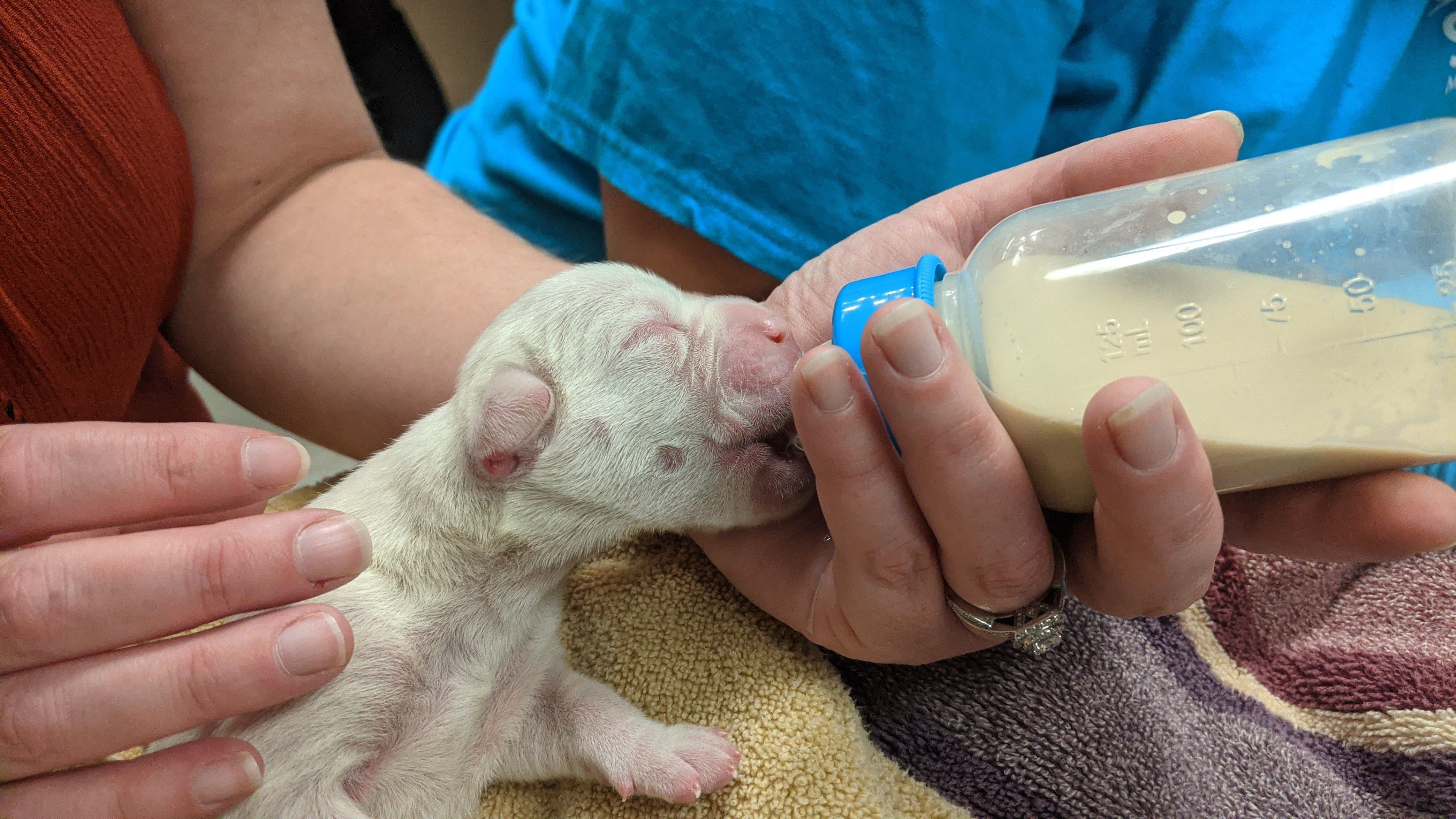Choosing the Right Pet

WHY DO I WANT A PET?
Adopting a pet because your children have been asking for a puppy or a kitten can be a mistake. Problem free, responsible pet ownership requires children who are mature enough to properly handle and care for your new pet.
DO I HAVE TIME FOR A PET?
Pets still need attention (food, water, care, and companionship) even if you are too tired or too busy. In over half the cases, the female family member bears the responsibility of caring for the pet.
CAN I AFFORD A PET?
In addition to adoption or purchase fees, consider annual expenses for veterinary check-ups, vaccinations, food, pet supplies, flea control, etc. Depending upon the size, breed, diet, etc., the average cost of owning a household pet is approximately $1,000 a year.
AM I ABLE TO HAVE A PET WHERE I CURRENTLY LIVE AND AM I PLANNING TO MOVE?
Many rental communities either don’t allow pets or have restrictions as to the type of pets they allow. Many landlords require an additional deposit if you own a pet. If you move and want to move the pet as well, your choice of housing may be restricted.
HOW MANY YEARS CAN I COMMIT TO A PET?
A pet is a lifelong commitment. Many cats and dogs can live anywhere from 8 to 20 years of age. Animals like horses, parrots, and tortoises can live significantly longer. When choosing a pet, think about your future life plans and goals. Do you plan to marry, have children, move, or relocate overseas? Will you join the military, go away to college, or need to care for an elderly relative? We know lifestyles can change and no one can foresee the future, but it is very important to take your future plans into consideration when selecting a pet.
HOW OLD SHOULD MY CHILD BE BEFORE WE GET A PET?
Although many experts recommend a child be at least six years old before a pet is brought into the family, you are the best judge of your child’s maturity. At the very least, your child should exhibit self-control and understand (and obey) the word “no.” Consider introducing your child to your friends’ well-behaved pets so you can observe your child’s behavior.
For many kids, the family pet is their best friend – a companion who not only provides unconditional love, but who also teaches them about friendship, responsibility, loyalty, and empathy. Don’t just consider cats and dogs: rabbits, hamsters, guinea pigs, small birds, and fish can make great family pets. These animals may be smaller than a cat or dog, but they require just as much attention and care. Many are often available for adoption from The SPCA.
While many families think they want “a pet for the children,” it actually takes a very special combination of parent/child/pet to have a successful relationship. If the child is under six years old, the pet should be over four months old. Puppies and kittens play roughly, and without careful supervision and training, both your child and your pet could have a bad experience with potentially serious consequences. It’s your responsibility, to your pet and to your child, to monitor their interaction.
You can help to strengthen the relationship between your pet and child by showing your respect for your pet’s needs. Teach by example that your pet is an important family member, not to be neglected and tossed away when no longer new and exciting. While a family pet offers children a wonderful opportunity to learn about caring and responsibility, regular pet-care duties need to be carefully supervised by an adult. A child should never be solely responsible for a pet. You also need to keep in mind that your child’s life and interests will change over the next ten to 15 years. The ultimate responsibility for a pet’s care and safety is that of the adults in the household.
HOW MUCH TIME DO I SPEND AT HOME ON AN AVERAGE DAY?
Puppies and kittens require a lot of physical interaction, training, and supervision and will not react well to being alone for a significant amount of time during the day. Most adult pets can easily adjust to your schedule as long as you give them time to learn the new family rules. If all of your family members are away from home more than eight hours most days, a dog may not be the appropriate choice for your household.
WILL THIS PET BE A COMPANION TO ANOTHER PET?
The SPCA requires that all adopted dogs meet any resident dogs before adoption to ensure a good match. We also provide behavior tips to help facilitate a smooth introduction for cats. You might want to consider adopting a pair of adult pets that are already accustomed to and attached to each other.
DO I WANT A PET THAT WILL PARTICIPATE WITH ME IN OUTDOOR ACTIVITIES?
If you want a dog to take hiking and camping, to play ball or swim in the lake with, or to train to catch flying discs, you should consider a teenage or young adult dog. For major outdoor activities a dog should be a certain size and have natural hardiness. Dogs that are involved in these types of activities must have excellent manners, and you must be willing and able to build a strong relationship with your dog, including ongoing obedience training.
DO I WANT A "LAP-PET" THAT WILL BE PHYSICALLY AFFECTIONATE AND CUDDLY?
Most puppies and kittens will accept some physical affection, but they don’t all grow up to be pets that like to be cuddled. This is another good example of a specific personality trait that will be easier to find in an adult animal.
DO I PREFER A CERTAIN PHYSICAL APPEARANCE, COLORING OR COAT?
If you like big cats, shiny dogs or fluffy coats, you can do some “educated guessing” with a puppy or kitten, but you’ll still be guessing. By the time a cat or dog is about six months old, these physical traits will be clear, plus you’ll be able to see what kind of personality traits go along with the “package.”
HOW LARGE IS "TOO LARGE" FOR MY LIFESTYLE?
If you’re renting your home (or is you plan to move to a new rental), you’ll want to check the pet policies in your rental contract or lease – especially regarding size limitations. Puppies and kittens grow up, and believe it or not, thousands of puppies and kittens lose their homes each year because someone didn’t think about what their adult size might be. If you have a specific size in mind for your ideal pet, it’s not a good idea to guess. By the time cats and most dogs are six or seven months old, you can usually tell what size they’ll be when they’re fully grown.
Many large dogs are surrendered to animal shelters because they were cute, little, fluffy puppies one week and big, clumsy, enthusiastic teenagers the next. It takes time to teach any dog basic manners, like not to pull on the leash, not to jump on people and not to play too roughly, and even more time and patience with a puppy. You can benefit from someone else’s poor planning if you adopt an adult or teenage dog, but only if you’re willing to do what they did not – teach him the difference between acceptable and unacceptable behavior. This training may take weeks or months, but it can begin very simply.
HOW CAN MY CHILD HELP CARE FOR A PET?
Allowing children to help care for a pet teaches responsibility and instills a feeling of competency and accomplishment. Be sure to not expect too much and choose tasks appropriate for the age of your child. Even young children can be involved in some aspect of caring for an animal friend – selecting a new toy or collar, assisting with grooming, or carrying a food can.
HOW CAN I TEACH MY KIDS TO TAKE GOOD CARE OF PETS?
The best way to teach your children how to be responsible pet caregivers is to be one yourself. This should start before you even get a pet – make sure you have realistic expectations about pet ownership. And take steps to select the right animal for your family at the right time.
As soon as you bring a pet into your family, set up and enforce rules regarding proper pet care. For example, tell your children not to pull the animal’s tail, ears, or other body parts, and insist that they never tease, hit, or chase the pet. Teach children how to properly pick up, hold, and pet the animal. These simple lessons are essential to helping kids become responsible caretakers.
Although certain pet-care activities must be handled by adults, you can still include your children by explaining why and what you’re doing. For example, when you take your pet to the veterinarian to be spayed or neutered, explain to your child how the operation not only reduces pet overpopulation but can also make your pet healthier, calmer, and more affectionate. Also involve your children in pet-training activities, which not only make your pet a more well-mannered family member, but also teach your child humane treatment and effective communication.
Ultimately, your children will learn how to treat animals – and people – by watching how you treat the family pet. They’ll study how you feed, pet, and exercise your companion animal. And they’ll pay close attention to how you react when a pet scratches the furniture, barks excessively, or soils in the house. Frustrating as these problems are, “getting rid of” the pet isn’t just unfair to the pet and your children, but it also sends the wrong message about commitment, trust, and responsibility. When faced with pet problems, get to the root of the problem. Often a veterinarian, animal shelter professional, or dog trainer can help you resolve pet issues so you can keep the whole family together.
DO WE WANT A PET?
The SPCA strongly recommends making this decision as a family. Make sure that your family is united in this decision and not simply getting a pet because the children have been begging. Get everyone involved in selecting a pet and don’t try to surprise someone with a pet. It is a wonderful experience to pick out your special pet or having that special pet pick you together as a family. And that pet will reward you with unconditional love for many years to come.








